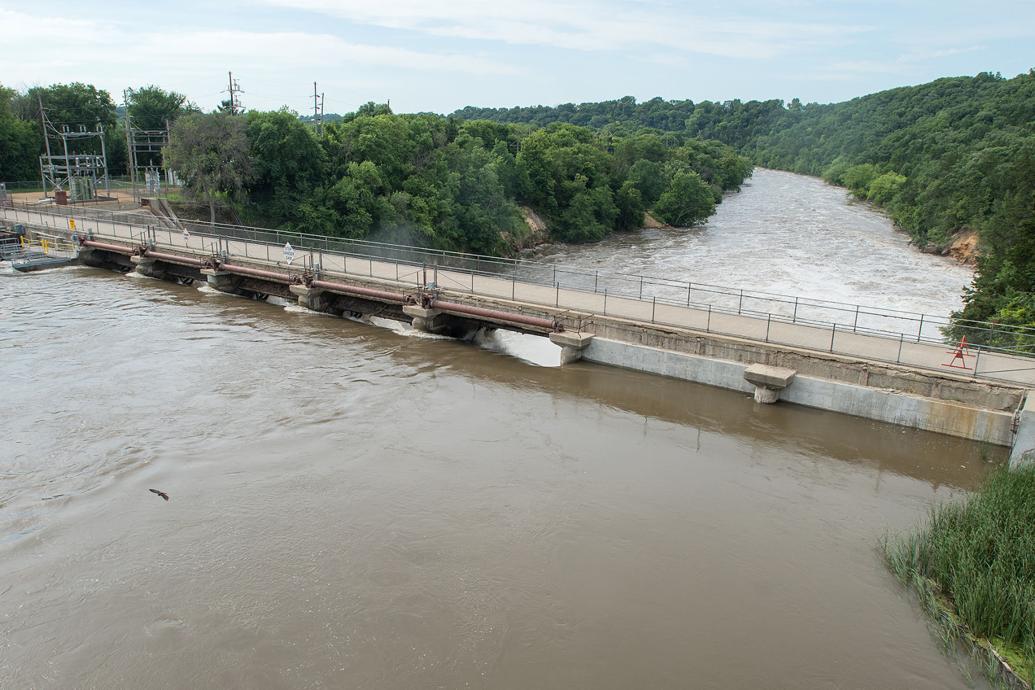Historical Significance

Mankato dam failure – The Mankato Dam, a towering concrete structure spanning the Minnesota River, holds immense historical significance for the region. Its construction in 1905 transformed the landscape, creating a reservoir that tamed the river’s once-unpredictable flow and brought prosperity to the surrounding area.
The Mankato Dam failure, a tragic event that forever altered the course of the Minnesota River, occurred in the heart of Mankato, Minnesota. The once-tranquil city was ravaged by the floodwaters, leaving behind a devastating reminder of the dam’s collapse.
Construction and Design
The dam’s design, a testament to early 20th-century engineering, was meticulously planned to withstand the relentless force of the river. Its massive concrete piers, anchored deep into the riverbed, support a spillway capable of handling the most extreme floods. The dam’s height of 125 feet created a reservoir stretching for miles, providing a reliable water source for irrigation and industry.
The Mankato Dam Failure, a tragic event in Minnesota’s history, left a lasting impact on the region. Mankato, Minnesota , a vibrant city known for its scenic beauty and cultural attractions, bears the legacy of this disaster. Despite the challenges posed by the dam’s collapse, the community’s resilience and spirit prevailed, shaping the city into what it is today.
Flood Control and Water Management
The Mankato Dam played a pivotal role in flood control, protecting the city of Mankato and its surrounding communities from the devastating floods that had plagued the region for centuries. The dam’s ability to regulate the river’s flow allowed for the development of floodplains, creating fertile land for agriculture and expanding the city’s boundaries.
The Mankato Dam failure, a devastating event in Minnesota’s history, has left an indelible mark on the region. The dam’s collapse unleashed a torrent of water, causing widespread destruction. In the wake of this tragedy, many questions arose, including the location of other dams that could pose similar risks.
One such dam is the Rapidan Dam, which is situated where is rapidan dam. While the Rapidan Dam has not experienced any major failures, its proximity to populated areas raises concerns about the potential consequences of a similar disaster.
Additionally, the dam provided a vital water source for irrigation, transforming the arid landscape into a thriving agricultural hub. The steady supply of water enabled farmers to cultivate crops, leading to economic growth and prosperity for the region.
Causes of the Failure

The catastrophic failure of the Mankato Dam was a complex event influenced by a combination of technical, structural, and human factors. A thorough analysis of the contributing factors reveals a tapestry of oversights and miscalculations that ultimately led to the dam’s collapse.
From a technical perspective, the dam’s design exhibited several flaws that compromised its structural integrity. The foundation upon which the dam was built consisted of unstable glacial till, a material susceptible to erosion and settlement. Moreover, the dam’s spillway was inadequate in size to accommodate the volume of water during periods of heavy rainfall, leading to excessive water pressure on the dam’s structure.
Geological Conditions, Mankato dam failure
- Unstable glacial till foundation prone to erosion and settlement.
- Inadequate spillway capacity for heavy rainfall.
Design Flaws
- Insufficient reinforcement of the dam’s structure.
- Lack of seepage control measures.
- Inadequate monitoring and inspection systems.
Maintenance Issues
- Neglect of routine maintenance and repairs.
- Failure to address signs of deterioration.
- Lack of proper drainage systems.
Human Error and Decision-Making
- Inadequate risk assessment and emergency planning.
- Misinterpretation of warning signs and data.
- Failure to evacuate residents in a timely manner.
Impacts and Consequences: Mankato Dam Failure

The failure of the Mankato Dam had profound and far-reaching impacts on the surrounding area, both in the immediate aftermath and in the long term.
Loss of Life and Property Damage
The most immediate and tragic consequence of the dam failure was the loss of life. The floodwaters swept away homes, businesses, and vehicles, killing at least 72 people. Many more were injured, and hundreds were left homeless.
The floodwaters also caused extensive property damage. Homes, businesses, and infrastructure were destroyed, and crops were wiped out. The total cost of the damage was estimated at over $25 million (equivalent to over $200 million in today’s dollars).
Environmental Consequences
The dam failure also had significant environmental consequences. The floodwaters released a large amount of sediment into the Minnesota River, which damaged aquatic habitats and killed fish and other wildlife.
The dam failure also changed the course of the Minnesota River, creating new channels and destroying existing ones. This had a negative impact on the river’s ecology and made it more difficult to navigate.
Economic and Social Effects
The dam failure had a devastating impact on the local economy. The loss of life and property damage disrupted businesses and caused a decline in tourism. The floodwaters also destroyed crops, which led to a loss of income for farmers.
The dam failure also had a significant social impact. The loss of life and property caused widespread grief and trauma. The floodwaters also displaced hundreds of people, which disrupted their lives and communities.
The Mankato Dam failure, a catastrophic event that unleashed a torrent of water upon the unsuspecting town, bears a haunting resemblance to the Rapidan Dam break. The sheer force of the escaping water in both instances carved a path of destruction, leaving behind a trail of devastation.
The Mankato Dam failure stands as a chilling reminder of the immense power of nature and the importance of vigilance in maintaining our infrastructure.
The Mankato Dam failure, a catastrophic event in 1868, unleashed a torrent of water that ravaged the Minnesota River valley. The river, once a lifeline for communities, turned into a raging beast, carving a path of destruction. Yet, even in the face of such devastation, the Mankato Dam failure left an enduring legacy, a reminder of the indomitable spirit that rebuilt the river valley, transforming it into a thriving region.